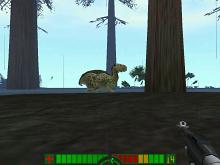

Instead, it requires considering predators and prey in terms of their functional traits (įigure 1). In particular, explaining context dependency in the interaction between any given species means that it is insufficient to examine predator–prey relationships solely on the basis of taxonomic identity (for example, wolves and pike are predators elk and stickleback are prey)ġ5. Hence, recent analyses focus on explaining the mechanisms determining the nature of predator and prey interactions in different environmental contextsġ2. But these assumptions are inconsistent with growing evidence that much variety underlies many predator–prey relationshipsĩ. This further assumes that the nature and strength of interaction between a predator and prey species do not vary among environmental contexts. This often assumes that all predators are functionally equivalent-merely capturing and consuming prey-and that all prey are passive victims. Predator–prey relationships are classically viewed as consumptive acts between two speciesĦ. Thus, characterizing these relationships functionally offers a way to understand the complexity that is inherent in predator–prey communities Predator–prey relationships are therefore a mainstay of community ecology. Most animal species are engaged in a predator–prey relationship by consuming prey or falling victim to predators or both. Research shows that examining predator–prey interactions through the lens of an adaptive evolutionary-ecological game offers a foundation to explain variety in the nature and strength of predator–prey interactions observed in different ecological contexts. These interactions in turn can have dynamic feedbacks that can change the context of the predator–prey interaction, causing predator and prey to adapt their traits-through phenotypically plastic or rapid evolutionary responses-and the nature of their interaction. Moreover, trait responses can be triggered by non-consumptive predator–prey interactions elicited by responses of prey to risk of predation.

Evidence shows that the nature and strength of many interactions are dependent upon the relative magnitude of predator and prey functional traits. Here, I discuss recent advances in this functional trait approach. Such traits include predator and prey body size, predator and prey personality, predator hunting mode, prey mobility, prey anti-predator behavior, and prey physiological stress. Functional traits are defined as any morphological, behavioral, or physiological trait of an organism associated with a biotic interaction. Recent approaches have begun to explore predator–prey relationships in terms of an evolutionary-ecological game in which predator and prey adapt to each other through reciprocal interactions involving context-dependent expression of functional traits that influence their biomechanics. Classic approaches have tried to understand and predict these relationships in terms of consumptive interactions between predator and prey species, but characterizing the interaction this way is insufficient to predict the complexity and context dependency inherent in predator–prey relationships. Predator–prey relationships are a central component of community dynamics.


 0 kommentar(er)
0 kommentar(er)
